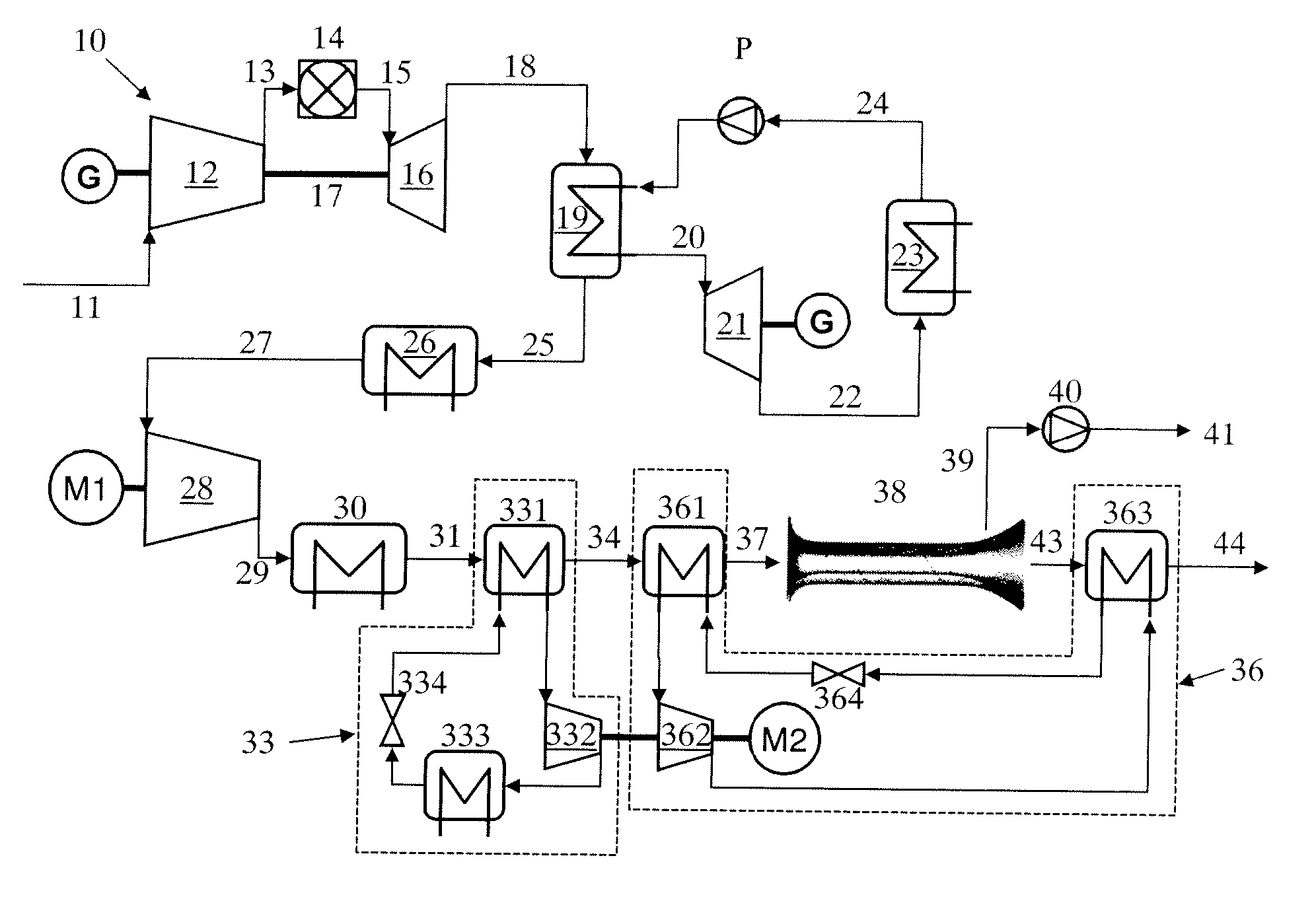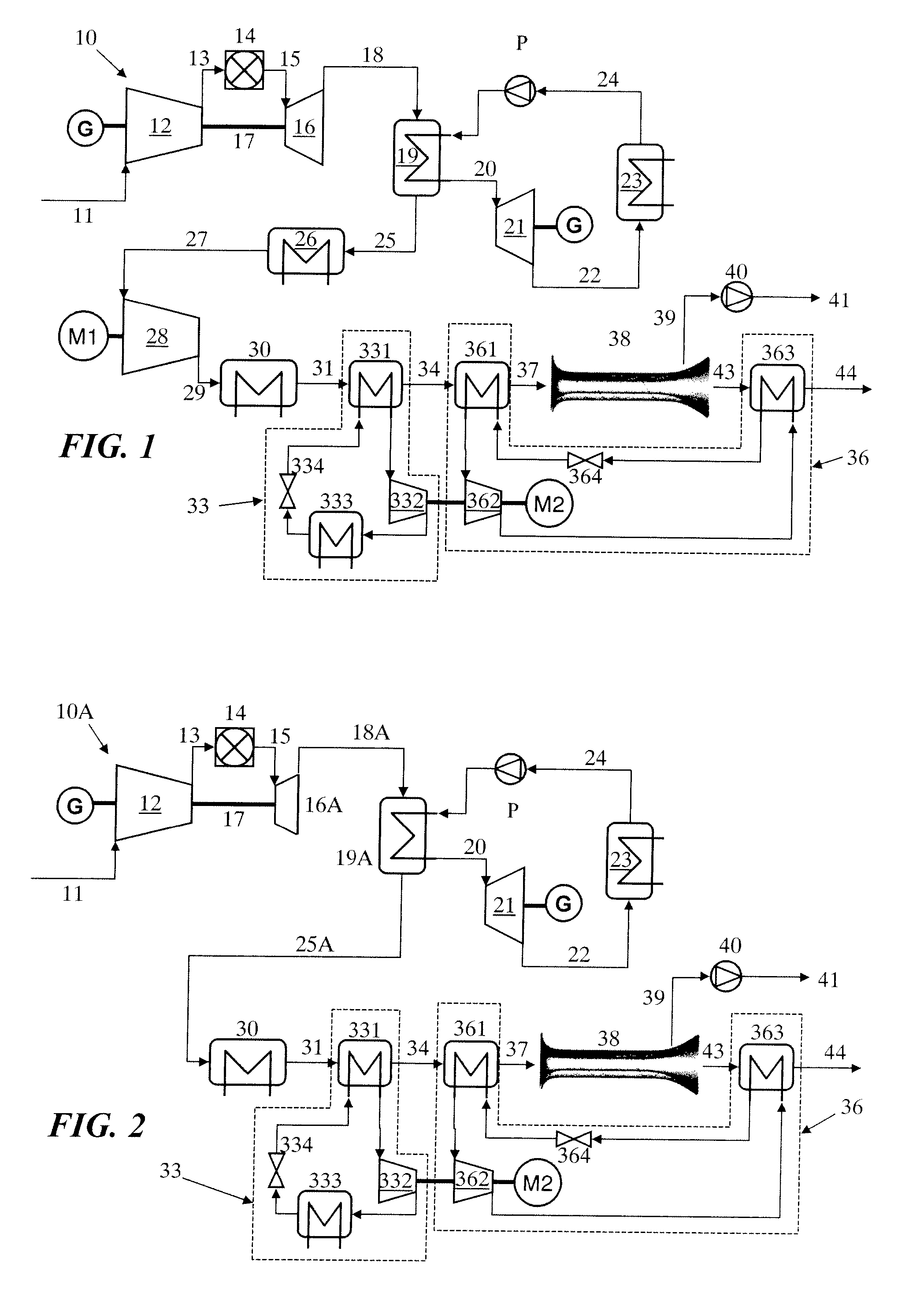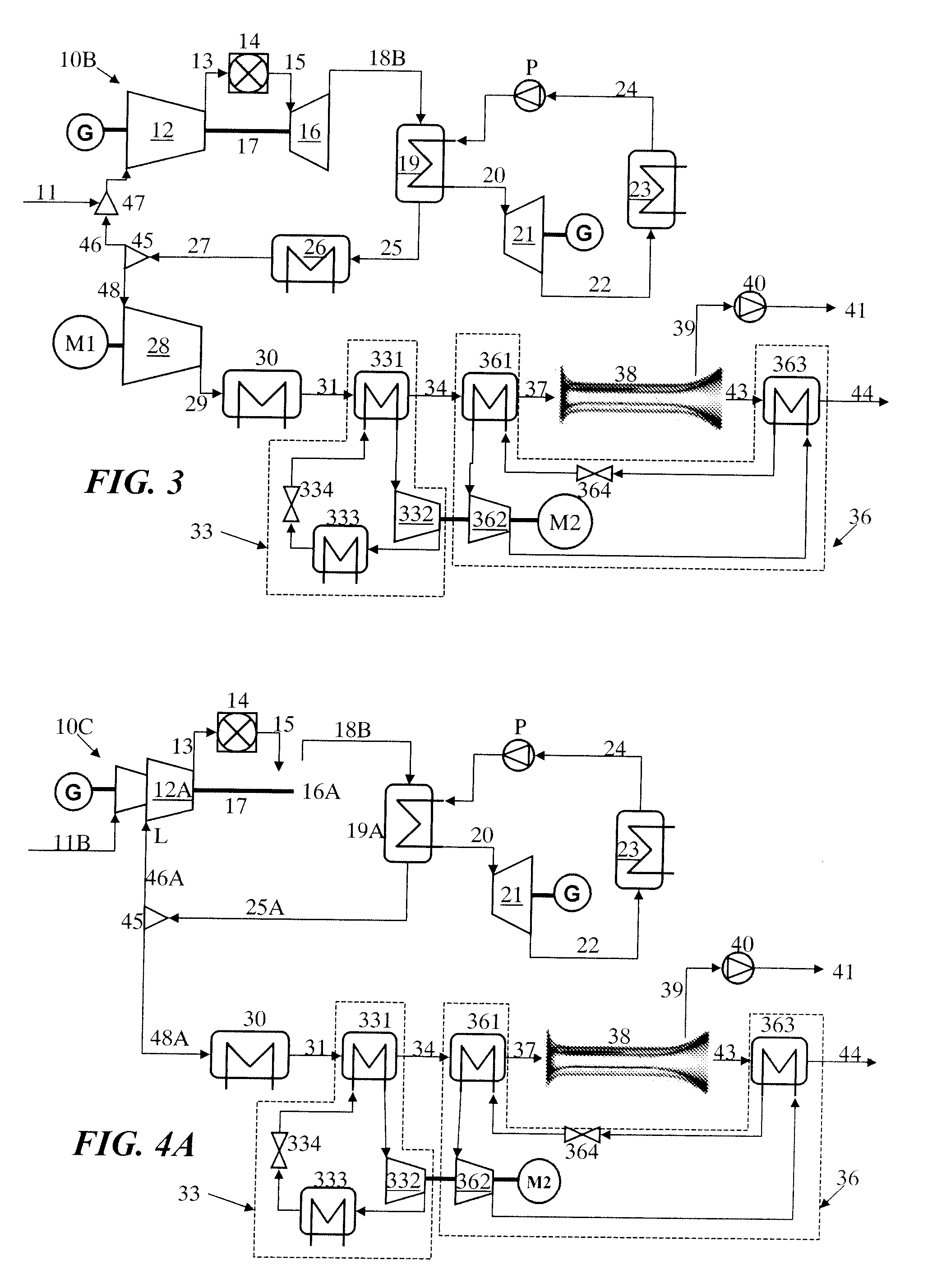Low carbon emissions combined cycle power plant and process
a combined cycle and power plant technology, applied in steam engine plants, machines/engines, mechanical equipment, etc., can solve the problems of complex plant structure, construction, running and maintenance costs, etc., and achieve the effects of reducing mixing losses, increasing engine power output and cycle thermal efficiency, and reducing complexity
- Summary
- Abstract
- Description
- Claims
- Application Information
AI Technical Summary
Benefits of technology
Problems solved by technology
Method used
Image
Examples
Embodiment Construction
[0042]In FIGS. 1 to 4, plant components and fluid flows which are the same or closely similar in different Figures have been given the same reference numerals and will not be described again if they have been described for an earlier Figure.
[0043]Referring to FIG. 2 and comparing it with FIG. 1, it will be seen that the complexity of the plant has been reduced by omitting the gas cooler 26 and the compressor 28. This simplification is enabled by increasing the exhaust pressure of the turbine 16A of gas turbine engine 10A, compared with the original turbine 16 of gas turbine engine 10. Practically, this can be achieved by removing at least the last stage of the turbine 16. The number of turbine stages removed from turbine 16, to achieve the modified turbine 16A, will depending on the type of existing engine being considered for use in conjunction with embodiments adhering to principles of the present invention, but is likely to be one or two, and unlikely to be more than three stages...
PUM
 Login to View More
Login to View More Abstract
Description
Claims
Application Information
 Login to View More
Login to View More - R&D
- Intellectual Property
- Life Sciences
- Materials
- Tech Scout
- Unparalleled Data Quality
- Higher Quality Content
- 60% Fewer Hallucinations
Browse by: Latest US Patents, China's latest patents, Technical Efficacy Thesaurus, Application Domain, Technology Topic, Popular Technical Reports.
© 2025 PatSnap. All rights reserved.Legal|Privacy policy|Modern Slavery Act Transparency Statement|Sitemap|About US| Contact US: help@patsnap.com



